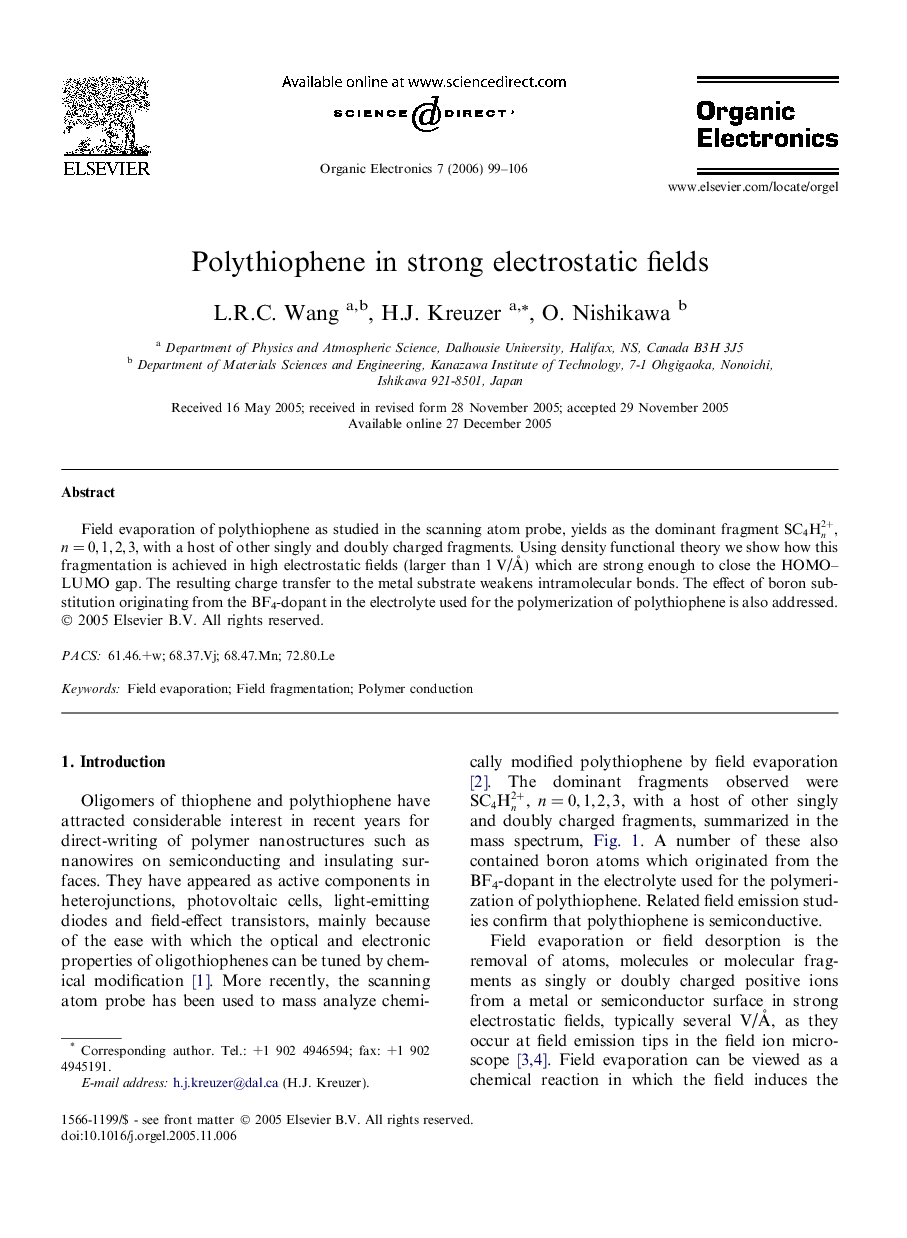| Article ID | Journal | Published Year | Pages | File Type |
|---|---|---|---|---|
| 1265908 | Organic Electronics | 2006 | 8 Pages |
Abstract
Field evaporation of polythiophene as studied in the scanning atom probe, yields as the dominant fragment SC4Hn2+, n = 0, 1, 2, 3, with a host of other singly and doubly charged fragments. Using density functional theory we show how this fragmentation is achieved in high electrostatic fields (larger than 1 V/Å) which are strong enough to close the HOMO–LUMO gap. The resulting charge transfer to the metal substrate weakens intramolecular bonds. The effect of boron substitution originating from the BF4-dopant in the electrolyte used for the polymerization of polythiophene is also addressed.
Related Topics
Physical Sciences and Engineering
Chemistry
Chemistry (General)
Authors
L.R.C. Wang, H.J. Kreuzer, O. Nishikawa,
